Flight log
Hour 7: Some more revision
Before going to my first circuit training session, Bob recommended doing more training on the basics. So, Hour 7 is a repeat of Hour 6.
This time I got my Gopro to work, at least at the start of the session.
Watch and listen to video and audio from the flight. There is video in the beginning and audio-only during the flight due to a mistake by the video camera operator (cough-cough). The video has chapters; use them to jump to any point of interest.
Yes, it's Wednesday again, and that means the opportunity for another one, or maybe two, flying lessons. The weather looks promising, so I was confident I would be able to do a second flight in the afternoon. The second flight would be my first circuits training session. But before doing that, Bob recommended doing another revision of the basics. So, this Wednesday's first flight, Hour 7 in my log, would be a revision of the basics.
In addition to improving my basic control skills, Bob wanted to simulate some of the procedures for operating the aeroplane in a circuit. For example, we simulated leveling off at downwind, reducing power, setting flap, and doing a descending turn for the transition between downwind and base, or base and final.
Checklists
Following a checklist is a fundamental practice in aviation. There are checklists for everything. An important aspect of early stage training for pilots is "simply" following a checklist and executing each item correctly.
For the Cessna 172S, I am using the checklist that you can see below. This checklist is compiled by Flight school. Apart from the standard items that you'd expect to see, there's also a handy map of Camden Airport.
Cessna 172S checklist, by Flight school, page 1.
Cessna 172S checklist, compiled by Flight school, page 2.
The flight
This flight was a revision of Hour 6. Bob did all the radio communications since there Camden tower and ground radio was not operating at the time. In un-towered aerodromes radio procedures are different to towered ones, but I am not familiar with those procedures.
In this flight, I was going to review and practice these exercises:
- Aircraft control and effects of control.
- Set throttle and mixture.
- Trim.
- Straight and level flight, trying to maintain altitude with constant of variable speed (i.e. accelerating or decelerating).
- Climbing.
- Descending.
- Turning, level, ascending, descending.
- Leveling off at downwind.
- Reducing power whilst maintaining altitude.
- Setting flap towards the end of the downwind leg of the circuit.
- Descending turns.
There are many other bits and pieces that I refreshed, such as:
- Checklists for everything. I practiced these:
- Cold start.
- After start.
- Taxi checks.
- Engine run up.
- Normal take off.
- After landing checks.
- Shutdown checks.
- Cold start.
- Refueling and doing a fuel drain check.
- And doing a pre-flight inspection. I did this check with Bob's assistance.
With all done it was time to take off.
Debriefing
At the end of the flight Bob pointed out a few things I did well, and others that I need to improve.
I was able to perform well with the basic control skills, including leveling off at downwind after take off and ascending through to crosswind. I also did sufficiently well with controlling power, setting flap and the descending turn into base.
A few things to improve are my directional control (i.e. I get distracted by the workload and allow the plan to drift), and managing speed by controlling attitude, whilst rate of descent should be managed by power.
I feel that I am starting to internalize those piloting behaviors. The goal is to make them automatic. Bob mentioned that I often take too long to react to a situation.
For example, I can see that the plane is too fast, but don't react immediately. How should I react? Cut power? Pitch up? Let's take a moment to think about this... Of course, there's no time for this.
I tend to think about them, as if I'm sitting at my desk, thinking about a technical problem. This is what I'm used to do as an engineer. Take the time to think about it, and come up with the best possible solution.
But when you are in the circuit, there is little time to think. Reactions must be fast and correct at the same time. This only comes with training and more training until these behaviors are ingrained in muscle memory and natural.
I am making progress, though, and the good news from this debriefing is the I'm competent enough to do my first circuits session in the afternoon flight. The weather is looking good for the rest of the day, and the tower is about to open. Let's have a lunch break and come back for circuits!
Don't miss the next flight log
Leave your email address by clicking on the button below, and I'll let you know as soon as I publish my next flight log. No spam, ever.
Shorter and narrated video.
Flightradar24 captures information from the aircraft's transponder and produces this animation. This is the animated track of our plane in this flight.
Blue sky and calm winds. Perfect.
The tower was closed for a few hours. Camden airport was "un-towered" during this time.
Going through the checklists.
Avionics on, almost ready to go!
Parked outside the Scout hangar.
